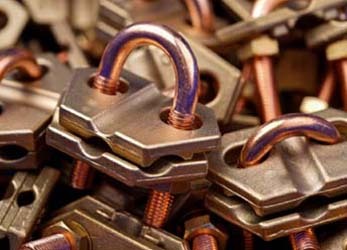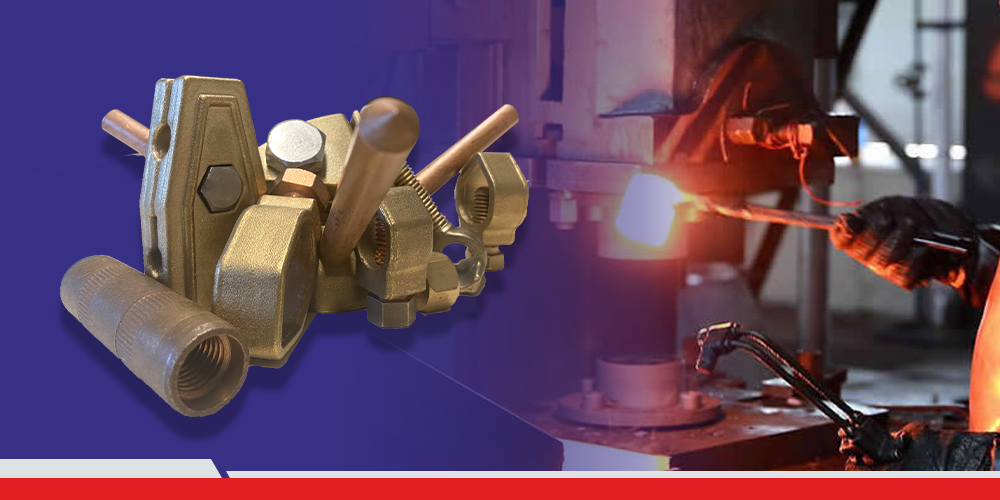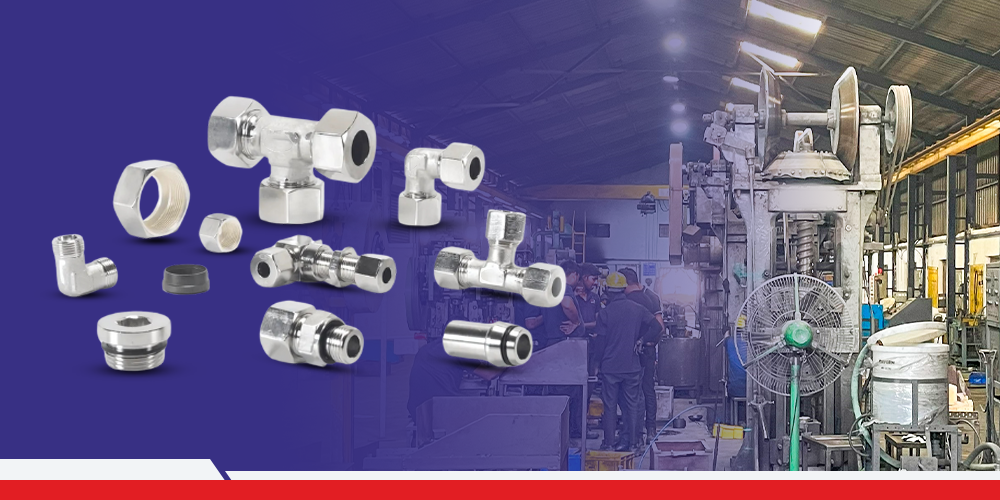Sales Inquiry
Why Non-ferrous forged metal over ferrous?

Difference Between Ferrous and Non- Ferrous metals
Ferrous Metals-
The Latin term ferrum, which means "containing iron," is where the word "ferrous" originates. Testing for magnetic characteristics is one surefire approach to determine whether a metal is ferrous. In general, ferrous metals are magnetic by nature and have a high tensile strength, which makes them perfect for use in construction.
Ferrous metals are any alloy made of iron or steel. Iron and steel can be combined with small amounts of other elements to provide the required characteristic. To boost steel's resistance to corrosion, for instance, copper is added. A characteristic of stainless steel is the addition of nickel, which makes steel stronger and more durable. Only alloy steel is created when small amounts of each metal are added to steel, not non-ferrous metal.
Non- Ferrous Metals-
The usage of non-ferrous metals dates back to the beginning of civilization. Copper, aluminium, nickel, zinc, lead, and tin are some common examples of non-ferrous metals, as are precious metals like gold, silver, platinum, and palladium. Because they are lighter in weight and more malleable than ferrous metals, non-ferrous metals have an edge over them.
Non-ferrous materials come in a wide variety and include every metal and alloy that does not include iron. Aluminium, copper, lead, nickel, tin, titanium, and zinc are non-ferrous metals, as are copper alloys like brass and bronze. Gold, silver, platinum, cobalt, mercury, tungsten, beryllium, bismuth, cerium, cadmium, niobium, indium, gallium, germanium, lithium, selenium, tantalum, tellurium, vanadium, and zirconium are some other uncommon or valuable non-ferrous metals.
Which is better?
The two types of metals have various qualities due to this fundamental difference, which enhances their own physical characteristics and establishes the applications they are best suited for.
Since the discovery of copper in 5,000 BC, non-ferrous metals have been used for thousands of years, with the Copper Age beginning at that time. This was followed by the Bronze Age, during which tin and copper were alloyed. Alloys, which are a mixture of metal with an element to improve the properties or aesthetic, can be either ferrous or non-ferrous.
It was not until around 1,200 BC, when the Iron Age began, that the use of ferrous metals started and iron production began to become more commonplace.
Ferrous metals are at disadvantage when it comes to usage over non-ferrous forged metals. Reasons being:
Due to their high carbon content, ferrous metals are susceptible to rust when exposed to the elements. Stainless steel and wrought iron, which doesn't rust due to its high iron concentration, are exceptions to this rule. Contrarily, non-ferrous metals, which lack iron, have a naturally stronger resistance to rust and corrosion, making them suitable for uses like roofs and gutters.
Conductivity is another advantage of non-ferrous metals. Usually, they conduct electricity better than ferrous metals. For instance, copper, a non-ferrous metal, is utilised in electrical wiring. The planet's metals, both ferrous and non-ferrous, all have different electrical conductivities, but copper has the highest. Electricity flow through a material is gauged by its electrical conductivity. Due to their high conductivity, non-ferrous metals like copper are perfect for electrical wiring and other electrical uses.
Non-ferrous metals often weigh less than their ferrous counterparts in addition to having superior conductivity. Iron is present in all ferrous metals. Ferrous metals are distinguished from non-ferrous metals by the presence of iron. Ferrous metals are often heavy because iron is a relatively heavy metal. Non-ferrous metals typically weigh less than ferrous metals because they don't contain any appreciable amount of iron. For instance, aluminium is lightweight. Aluminium weighs less than iron, steel, and other ferrous metals.
Some Statistics related to Non-Ferrous Metals:
Aluminium-
In the last quarter of 2022, global output of aluminium metal was around 40.67 million tonnes, compared to global consumption of 40.79 million tonnes, creating a 0.12 million tonnes market deficit. During the months of October through December 2022, it was predicted that global consumption of primary aluminium metal would be 17.21 million tonnes, compared to global production of about 17.26 million tonnes, resulting in a 0.06 million tonnes surplus. During the months of April and September 2022, India produced about 5.85% of the world's primary aluminium.
Copper-
Between October 2021 and September 2022, around 21,655 thousand metric tonnes of copper were produced worldwide (TMT). India contributed 24.25 TMT, or 0.11% of global production from October 2021 to September 2022.
Between October 2021 and September 2022, the world produced around 25,226 TMT of refined copper, compared to the 25,742 TMT that was consumed globally. According to an estimate from the International Copper Study Group (ICSG) dated October 19, 2022, global production and consumption of refined copper are expected to be 25,495 TMT and 25,823 TMT, respectively, in the calendar year 2022. Between October 2021 and September 2022, the projected global output and consumption of refined copper will be 25,318 TMT and 25,681 TMT, respectively. From October 2021 to September 2022, the world's production and consumption of refined copper are estimated to have increased by 100.36% and 99.76%, respectively. India contributed 0.21% of global production from October 2021 to September 2022.
Zinc-
Between April 2022 and September 2022, the world produced around 6,767 thousand metric tonnes of zinc, whereas 7,018 thousand metric tonnes were used. Between April 2022 and September 2022, India produced 6% of the world's zinc metal.
Lead-
Between April 2022 and September 2022, 6,059 thousand metric tonnes of lead metal were produced globally, while 6,047 thousand metric tonnes were used. Between April 2022 and September 2022, India produced 8% of the world's lead metal.
Conclusion:
For thousands of years, people have used numerous non-ferrous metals for a variety of purposes. These materials are used in a variety of industries, including aerospace, electronics, and ornamental applications.
Despite having the ability to duplicate some ferrous metals' characteristics, non-ferrous metals are typically chosen for their own distinctive qualities. These characteristics include low weight, non-magnetic characteristics, and resistance to corrosion. These metals are also frequently more pliable than ferrous metals, which enables them to be employed for ornamental applications like jewellery or statuary.
To fulfil all your non-ferrous forging component requirements, get in touch with IQS Engineering Solutions now.






